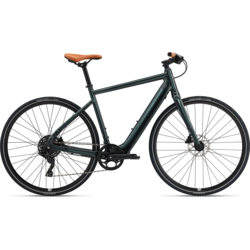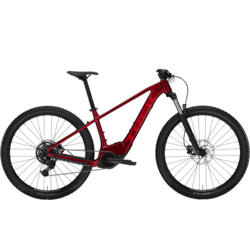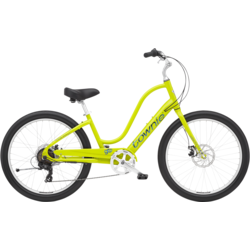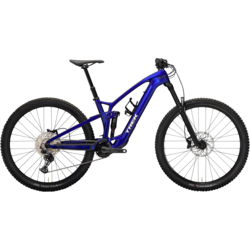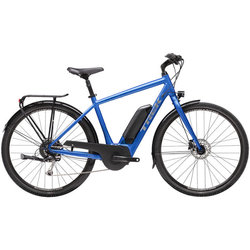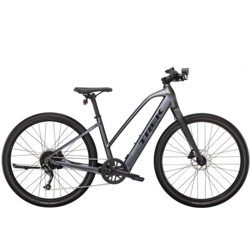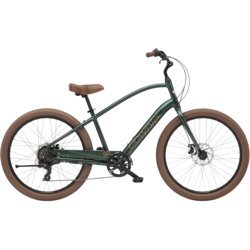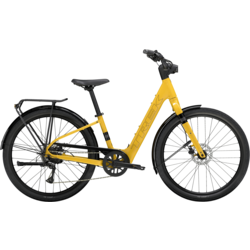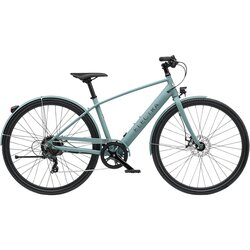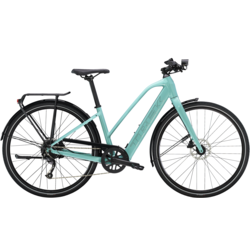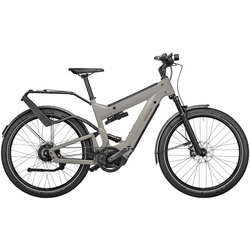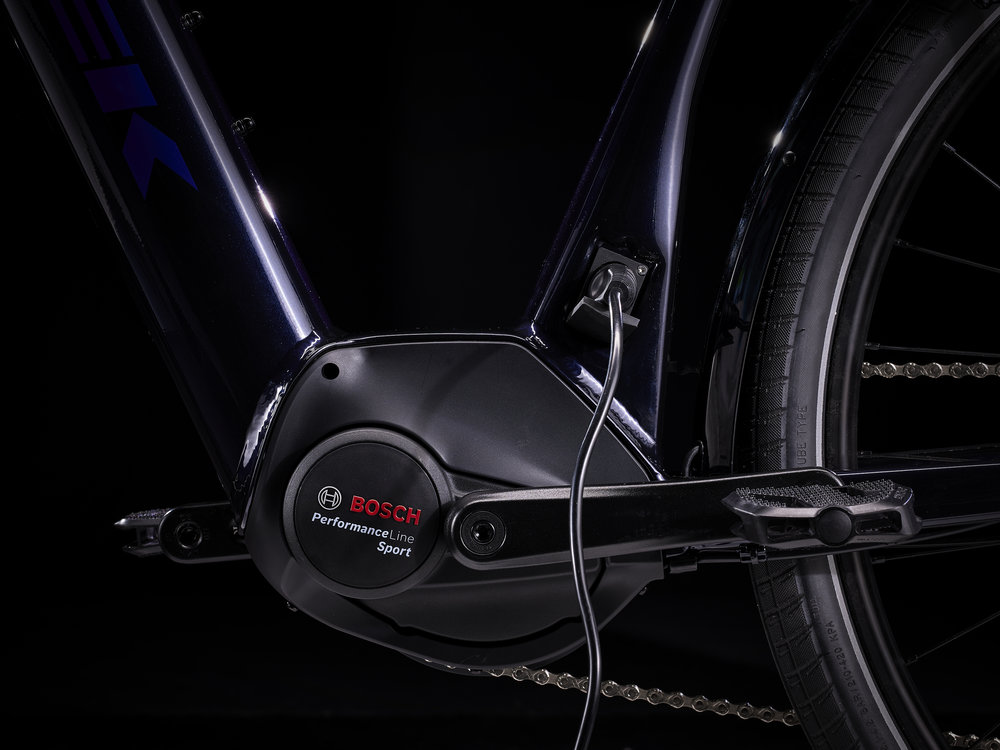E-Bike Buyer's Guide
Why an e-bike?
The options for different types of e-bikes are more numerous than ever. There is now an e-bike for every type of rider. And the reasons to get an e-bike keep growing. Whether you are a long-time cyclist who wants to continue exploring long routes over varied terrain or you don't even consider yourself a cyclist, but see using an e-bike as a low-impact, fun way to knock out those shorter distance trips from home, there's a e-bike made just for you. We've put this E-Bike Buyer's Guide Together to help guide you to the perfect bike. But, as always, if you want help from the experts, please give us a call or come into any of our locations. We're here to help!
E-Bike brands we sell. Maine's best selection of e-bikes!
E-Bike Classes and Terminology
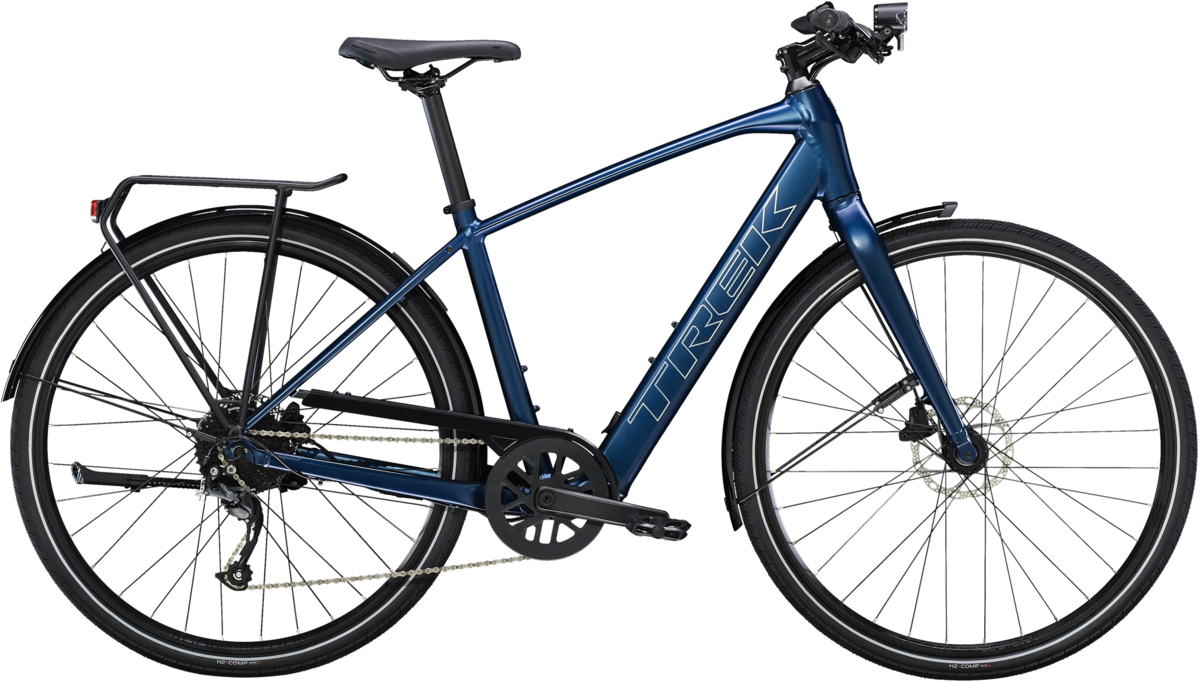
E-Bike Classes
At the moment, E-bikes are divided into 3 "classes". The class an e-bike is in tells you about the features and capabilities of the drive systems on the bike. All of the e-bikes you’ll see at Gorham Bike & Ski are either Class 1 or Class 3 pedal-assist e-bikes (which will be explained below). These e-bikes are perfect for riders who want the experience of pedaling a bicycle, but with the added boost of an electric motor.
Class 1: Pedal-assist only. The motor provides assistance up to 20mph.
Class 2: Pedal-assist mode up to 20mph and a throttle-powered mode.
Class 3: Pedal-assist only. The motor provides assistance up to 28mph.
Most cyclists will be looking for Class 1 and Class 3 e-bikes that are pedal-assist only. Many bike trails in the U.S. only allow pedal-assist e-bikes (check your local e-bike laws!).
The main difference between Class 1 and Class 3 e-bikes is the “top speed” of 20mph vs. 28mph. Top speed is in quotes because, naturally, you can go faster by pedaling harder or going down a steep hill. However, after that maximum assisted speed is reached, the motor will stop helping you. This speed governor means e-bikes are classified as bicycles instead of motor vehicles that require licensing and registration. You will be able to tell whether e-bikes are Class 1 or Class 3 by the listed top speed.
Pedal-Assist
Class 1 and Class 3 e-bikes are called “pedal-assist” because when you pedal, the electric motor engages to assist you with a boost of power. The harder you pedal, the more the motor assists you. You ride it like a regular bicycle and control your speed with your legs, so there’s no learning curve.
Assist Modes/Drive Modes
Most e-bikes offer different levels of pedal assistance from the motor, called “assist modes” or “drive modes.” These modes can be selected using a handlebar-mounted switch and are usually visible on a handlebar-mounted display. Common names for these modes are Eco, Standard / Trail, and Boost / Turbo. Eco modes reduce the level of pedal assistance and increases battery life. Boost / Turbo modes increase the level of pedal assistance to improve acceleration but affect battery life.
Walk mode/Push-Assist
While out and about on your e-bike, you may encounter situations like stairs, tight corners, or technical trails where you have to dismount and push your bike. Because e-bikes weigh more than traditional bikes, many bike have a low-power push-assist or walk mode that provides a small boost from the motor to make walking with the bike easier.
E-Bike Motors
Mid-Drive Motors
Mid-drive motors are integrated into the bottom bracket area of the frame along with the bike’s crank arms. This is the most common motor set-up for modern pedal-assist e-bikes. Mid-drive motors keep the weight of the motor low, which lowers the bike’s center of gravity to improve handling and stability. They also tend to provide a quicker response, more torque and power, and the most natural pedaling feel.
Hub Drive Motors
Hub-mounted motors are located at the rear hub. These are often lighter and more discrete but tend to provide less power than larger mid-drive motors. In modern pedal-assist e-bikes, hub-mounted motors are generally used for e-bikes designed to look like standard bicycles or lightweight e-bikes designed to provide minimal assistance to suit more advanced riders.
Torque (Nm)
Torque is a turning force that causes rotation (i.e., rotating the rear wheel.) For e-bikes, torque is measured in Newton meters (Nm) and it refers to the maximum force the motor can apply to turn the rear wheel. Most mid-drive motors in Class 1 and Class 3 e-bikes are rated at 75-90Nm. Smaller mid-drive and hub-mounted motors that are used in lightweight e-bikes are usually rated at 35-40Nm.
Power (watts)
Power is the amount of work that can be done by the e-bike motor. It can be thought of as a torque multiplied by RPM (i.e., pedaling cadence). Power is measured in watts (w). Pedal-assist e-bikes are limited to 250w by law. This limited power means e-bikes are still classified as bicycles instead of motor vehicles that require licensing and registration. The vast majority of e-bikes use 240-250w motors.
E-Bike Batteries
Voltage (v)
Voltage (v) measures the power flow from the battery to the motor. Higher voltage means more electrons can flow to the motor so that the motor can do its work. Many e-bikes use 36v or 48v batteries, but there are also e-bikes that use 24v or 52v batteries. Voltage is not super important for understanding e-bikes, because most e-bike batteries will list watt-hours (explained below) instead.
Amp-hours (Ah)
Amp-hours (Ah) is a measure of battery capacity. More amp-hours equates to a longer-lasting charge cycle (explained below). Most modern e-bike batteries offer between 11-14Ah. Amp-hours are not critical to understanding e-bikes, because most e-bike batteries will list watt-hours (explained below) instead.
Watt-hours (Wh)
Watt-hours (Wh) is a measure of overall battery capacity. It’s calculated by multiplying voltage by amp-hours. For example, a battery rated at 36v and 14Ah has a capacity of 500Wh (36x14=504). In a more general sense, watt-hours describe how big a battery is and how long it will last before it is drained. In theory, a 500Wh battery will last 2 hours if the e-bike motor draws a consistent 250W of power. In practice, other external factors will also have an effect on battery life (see “Range” below).
Higher Wh batteries are larger and heavier but last longer. Most Class 1 and Class 3 e-bikes will have batteries in the 300-900Wh range. 500Wh is extremely common. Smaller 300-350Wh batteries are common on lightweight e-bikes. e-bikes designed to travel long distances or carry cargo will have bigger 630-900Wh batteries.
Range
Range is the distance or time a battery will last. Range is primarily determined by battery capacity (Wh), but it’s also affected by the total weight of the bike and rider, the terrain (hilly vs. flat), and the drive mode (Eco vs. Boost). Because range will change according to these factors, many e-bike manufacturers don’t provide a claimed range or will provide a very broad range (e.g., 20-100 miles). Some e-bikes can display the estimated range remaining on the handlebar display.
Charge cycles
Battery life (as in how long a battery lasts before it should be replaced) is usually expressed in terms of charge cycles. Charge cycles refer to emptying and recharging the battery. A battery rated for 1,000 charge cycles should last through 1,000 recharges. Most modern lithium-ion e-bike batteries will last for 800-1,000 charge cycles. For most cyclists, this is enough for 3-5 years of consistent use
Frequently asked questions
Why would I use an e-bike over a regular bike?
- Get to where you need to go faster and easier than on a regular bike. Depending on how you choose to ride, you can travel without significant effort at up to 20mph on some bikes and even up to 28mph on others.
- Climbing hills is a breeze... and we aren’t talking about the breeze from huffing and puffing.
- No sweat. Even though you can ride much faster, you won’t feel like you have to take a shower once you are there.
- Safer. That might seem counter-intuitive, since you can go faster than on a regular bike, but you also get an easier start from stopped positions, allowing you to get through an intersection steadier and quicker. When climbing steep hills with cars nearby you can focus more of your energy on controlling the bike instead of propelling the bike.
- Easier on those joints. Use the electric assist to ease the pressure on your knees and hips.
- Staying together. You may have a riding partner that rides at a different pace than you. An e-bike can even out the pace for both of you.
- Ditch the car. The convenience, the ease and the speed of an electric bike make it an alternative to an automobile more often than a regular bike. A study by Portland State University shows that e-bike owners ride more frequently and farther than when they relied on their traditional bike. This was the case for all age groups.
- It’s FUN!!! Just try one and you’ll see. Or catch a friend coming back from their first test ride with a big smile on their face.
Do I need a license?
No. As long as the e-bike has a motor size of 750 watts or less (1000 watts in Oregon) and is programmed so that it can’t go more than 20mph without pedaling, there is no need for a license. No electric bike sold by Gorham Bike & Ski requires licensing. FYI – you must be at least 16 years of age to operate an e-bike in public places.
Where can I ride my e-bike?
The definition of an e-bike and rules on where to ride will vary state by state. For federal land the rules vary depending on the branch of government. For the most complete resource, check out PeopleforBikes.org
What about theft?
As best as we can determine, e-bikes don’t get stolen with any more frequency than non-electric bikes. That’s most likely because people tend to lock them up better and because a bike thief needs to get a charger and a battery key to make the bike truly saleable.
The best ways to protect your bike from theft are:
- Get a high-quality bike lock. Cable locks are way too easy to cut. High-quality u-bolts and folding locks are better.
- If you are parking your bike in your garage, lock your garage. It’s probably the #1 location we’ve seen bikes get stolen from.
- When in public, lock your bike in a visible location.
Do I need special insurance?
Check with your insurance company. Some insurance companies do not treat e-bikes as bicycles, so you may need to get a rider added to your homeowners/renters insurance for theft protection. You can also check with two bicycle specialty insurers – Velosurance.com and Spokeinsurance.com.
Aren't e-bikes heavy?
Electric bikes are typically heavier than regular bikes. But the weight of any bicycle (electrical or non-electrical) is felt the most when climbing hills. The electric assist on an e-bike makes up for the additional weight many times over. Where weight does matter is if you need to lift the bike. If you have to climb several flights of stairs to store your bike, we strongly suggest finding a more accessible storage location.







